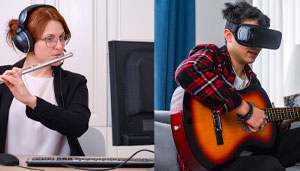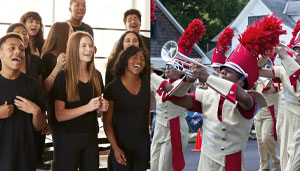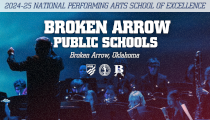Knowing the Difference, as You Make a Difference for Special Learners
By Maureen Butler on October 25, 2022 students with disabilities PrintWithin the field of education, it can be difficult to stay current with changes in terminology as new trends emerge. This is also the case with special education, as new research informs and changes the way we think and teach. There may even be some terms we’ve encountered along the way that we find confusing. Here are some explanations to clarify terminology as you navigate through the world of special learners.
ADD or ADHD
More experienced teachers will remember when students were diagnosed with either Attention Deficit Disorder or Attention Deficit Hyperactivity Disorder. ADD is now considered an outdated term, and ADHD is in current clinical use, since it refers to the two key behaviors of inattention and hyperactivity. Additionally, there are three subtypes of ADHD:
- Predominantly Inattentive Type: Students have difficulty maintaining concentration and attention, exhibit a lack of focus and organization, and are easily distracted.
- Predominantly Hyperactive-Impulsive Type: Students seem to be always moving, frequently talk at inappropriate times, and exhibit lack of impulse control.
- Combined Type: Students exhibit a combination of both inattentive and hyperactive-impulsive behaviors.
Knowing these classifications will help you make accommodations for all three types of students. In our classes, it may be easy to determine which students are hyperactive-impulsive, and not as easy to determine which students have attention deficits. If students are already diagnosed, this information can be found in their IEP or 504 plans. Since we see students for much less time than the classroom teacher, we have to be on the lookout for the behaviors that may suggest undiagnosed attention deficits, and respond accordingly. Additionally, network with your colleagues (the other special subject teachers, classroom teachers) when you suspect students of having these deficits, and contribute to your school’s referral plans. Understanding the challenges our students face will improve the likelihood of positive musical experiences for them.
Auditory Processing Disorder or Hearing Loss
A diagnosis of an Auditory Processing Disorder (APD) does not mean a student has a hearing loss. Rather, this term refers to the inability of the brain to correctly process and interpret sounds. A student with APD has normal hearing but has difficulty with such tasks as discriminating between similar speech sounds, tuning out background noise, remembering what was heard (including song lyrics) and following directions. It may seem that the child cannot hear you or has not been paying attention, but in reality they have difficulty processing what they’ve heard.
There are two main types of hearing loss: sensorineural, in which the auditory nerve and cochlea do not function; and conduction hearing loss, in which something (an incorrectly formed middle or outer ear, for example) physically blocks sound from traveling to the inner ear. Students with sensorineural loss may be completely deaf, may exhibit a range anywhere from a mild to a profound loss, and may use hearing aids or cochlear implants to access sound, with varying results. Students with a conduction loss hear near normal levels with a Bone Anchored Hearing Aid (BAHA).
Students with APD and those with hearing loss may all need accommodations and modifications; knowing the difference will help you structure your learning environment to maximize their learning potential.
Autism Spectrum Disorder (ASD) or Asperger Syndrome (AS)
Although AS was first identified by Hans Asperger in 1944, it was not listed in the Diagnostic and Statistical Manual of Mental Disorders (DSM) until 1994, in the fourth edition. Since 2013, however, the fifth edition includes Asperger Syndrome along with other conditions in the umbrella term of Autistic Spectrum Disorder. Although children may no longer be given this diagnosis, many people with Asperger Syndrome identify with this term, and several national and international groups still utilize it.
Students with ASD may exhibit deficits in social interaction, communication, and sensory processing, and may engage in restrictive, repetitive behaviors. These characteristics are currently categorized as:
- Level 1 “Requiring support” (includes highly functioning children and children formerly diagnosed with AS) or
- Level 2 – “Requiring substantial support” or
- Level 3 – “Requiring very substantial support.”
Understanding diagnostic criteria in this case is not as important as understanding that no two children on the spectrum will be exactly alike. You will see a variety of behaviors exhibited by students, and understanding their behaviors will help you provide them with enriching musical experiences.
You might have noticed that similar behaviors are somewhat present in children with different diagnoses. Consider students who seem to be easily distracted in your classes. Is it because they are unable to tune out background noise? Or do they have attention deficits, and cannot maintain focus? Are they on the autism spectrum and the sensory input is overwhelming? How do we respond appropriately? Becoming informed by reading students’ IEP and 504 plans is a helpful practice, which may lead us to the question: What is the difference between those two documents?
Individual Education Program or 504 Plans
These plans for students with disabilities fall under two different laws. An IEP is part of the Individuals with Disabilities Education Act (IDEA) that allows for special education for children with one of thirteen specific disabilities. 504 is a section of the Rehabilitation Act of 1973, which guarantees civil rights to children with any disability.
For students to qualify for an IEP, their disability (such as autism, visual impairment, emotional disturbance) must have an adverse effect on their learning, requiring special education, with any related services that are necessary. For students to qualify for services under the broader 504 plan, their disability (such as reading, communicating, ADHD) must affect their learning in the general education classroom, requiring services as well as changes to that learning environment. The IEP process is much more formal and complex, and includes annual education goals and timelines. Teachers are required by law to learn what accommodations and modifications they must provide to their students as outlined in either plan. Some schools show teachers the full reports; others are shown only a list of accommodations and modifications they are responsible for implementing. But what is the difference between an accommodation and a modification?
Accommodation or Modification
An accommodation is used when a student can participate and accomplish a task, but needs extra support – more time, peer assistance, after-school instruction, larger font, etc. Expectations for what the student will learn are the same as for the rest of the class.
A modification is used when the students’ disabilities prevent them from fully participating and accomplishing a task. In this case, an assignment might be modified by reducing a complex rhythm to a “skeleton” rhythm, changing an essay test to short answers, or substituting playing a rhythm instrument for dancing. Our goal is to create realistic expectations for the student to participate and be successful in a meaningful way.
If you have any questions about your special learners, be sure to network with your colleagues. Music teachers can feel isolated from other staff members for a variety of reasons. There are professionals in your building and district who are experts in their field and are willing to help. As you learn more about your special learners, you will be able to make more of a difference – for all your students.
For more information:
https://www.autismspeaks.org
https://www.nimh.nih.gov/health/topics/attention-deficit-hyperactivity-disorder-adhd/index.shtml
https://www.asha.org/public/hearing/understanding-auditory-processing-disorders-in-children/
Adamek, Mary S., and Darrow, Alice-Ann, Music in Special Education, Second Edition, Copyright 2010, The American Music Therapy Corporation
Maureen Butler
This article first appeared in NJMEA’s TEMPO Magazine, October 2019 edition. The goal of the New Jersey Music Educators Association is to advance music instruction in New Jersey’s educational institutions at all levels that provide in-service and enrichment opportunities for practicing and retired teachers and prospective music educators, as well as sponsoring various festivals and all-state performing groups for K-12 students. Check out the New Jersey Music Educators Association here: (https://njmea.org/)
Most Recent Articles







